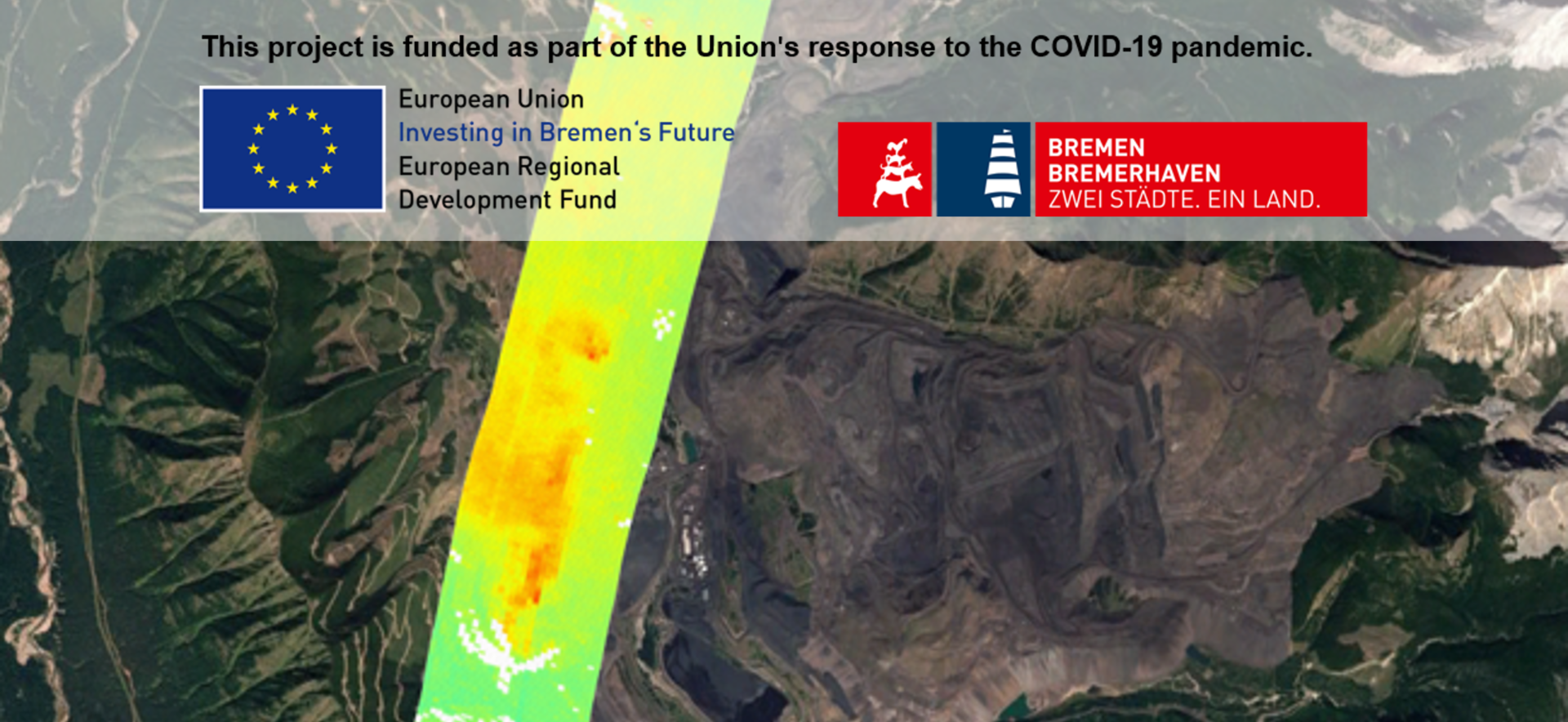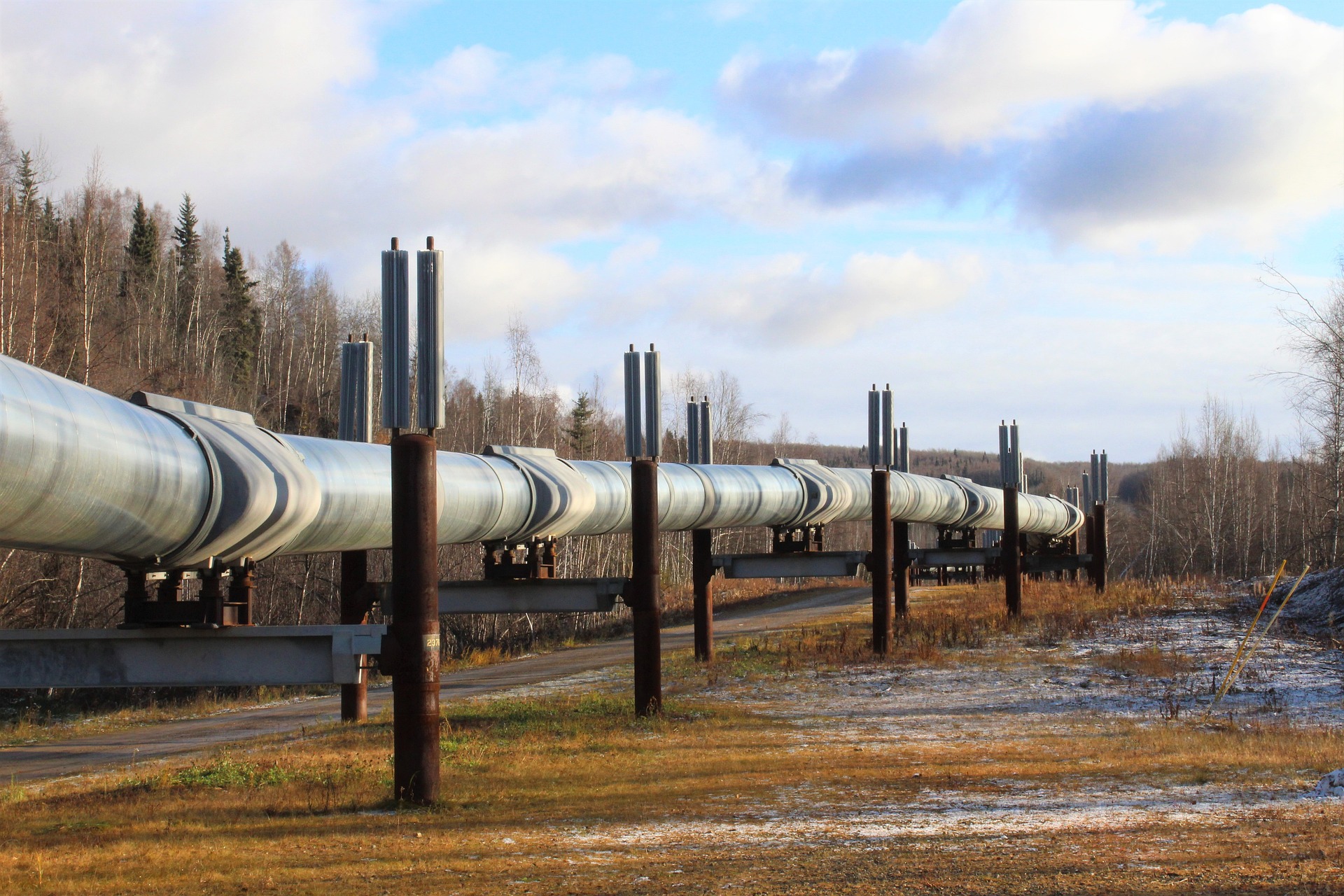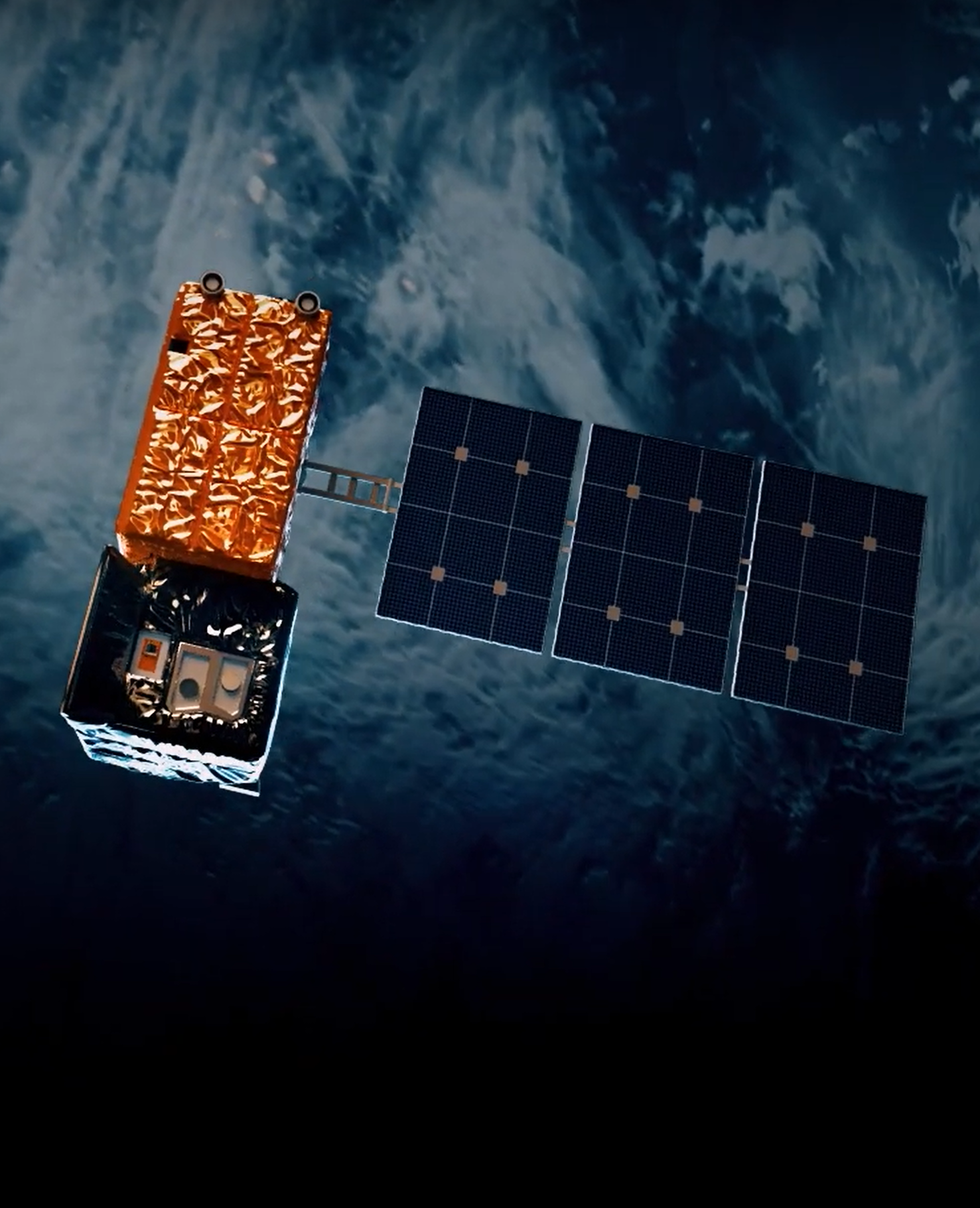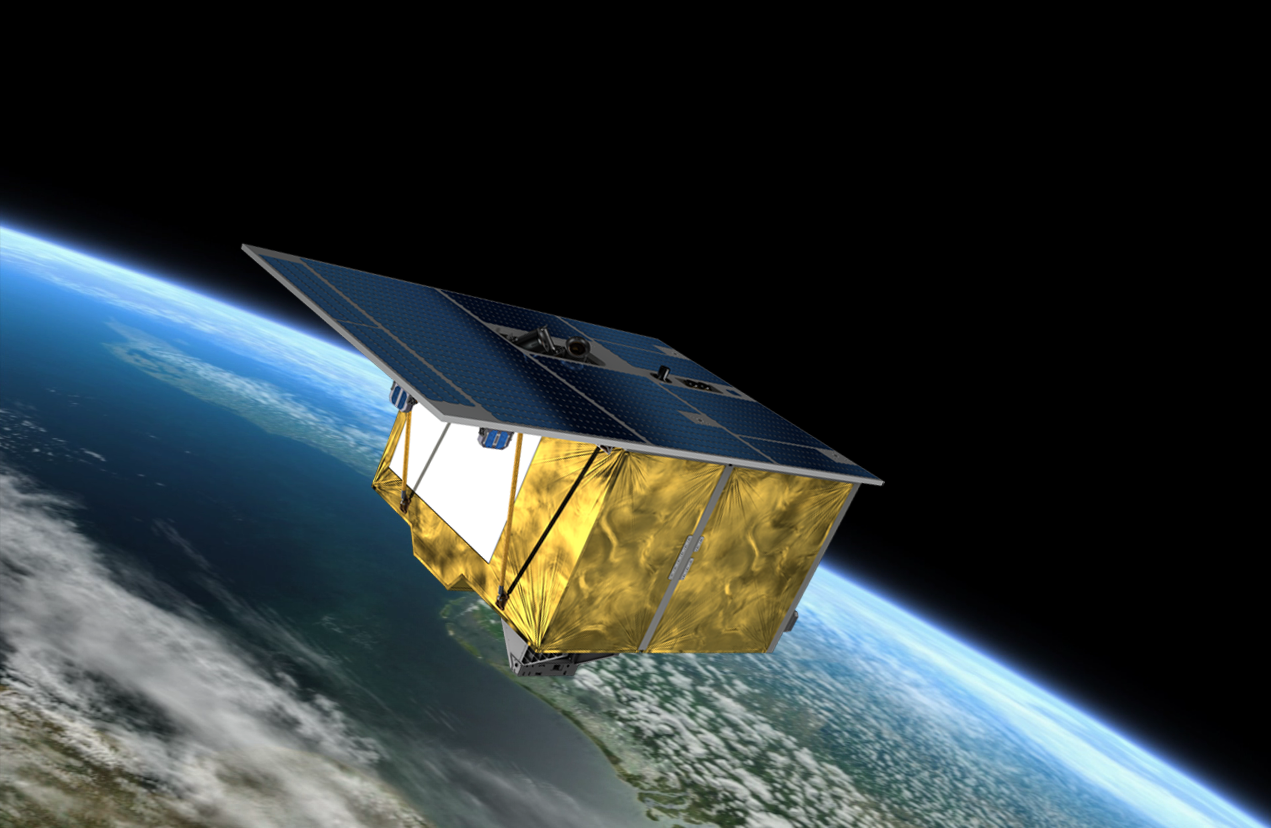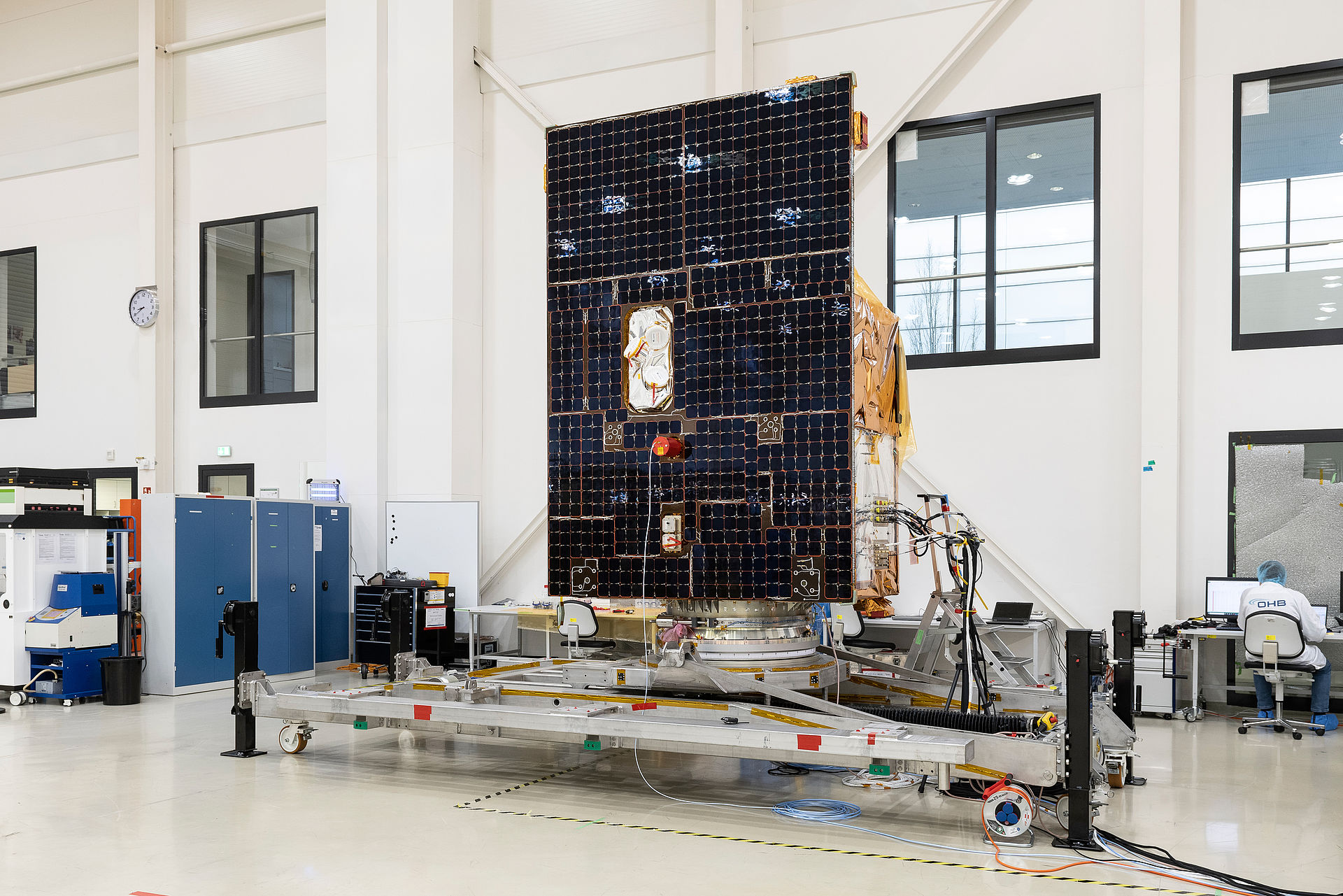Heat, droughts, floods, storms – climate change is presenting society with ever greater challenges. Scientists have agreed for decades that anthropogenic greenhouse gas emissions are at the heart of the problem, but even today, emissions are rarely quantified accurately and traced back to their sources. In order to remedy this situation for methane – one of the most important greenhouse gases alongside carbon dioxide – OHB's Predevelopment Department is currently working together with the Institute for Environmental Physics at the University of Bremen on a mission proposal for a small satellite constellation for the analysis of methane emissions and their sources with high temporal and spatial resolution. The project will run for 12 months and is funded by the European Regional Development Fund (ERDF) as part of the EU's response to the COVID-19 pandemic.
Whenever greenhouse gas emissions are mentioned in the context of climate change, most people immediately think of carbon dioxide (CO2). However, in addition to carbon dioxide, there are also other climate-damaging gases that are released by human activities. These primarily include methane (CH4), nitrous oxide or laughing gas (N2O) and fluorinated greenhouse gases (F-gases). Although carbon dioxide accounts for by far the largest share of greenhouse gases emitted worldwide, compared to the other gases it has the lowest greenhouse effect. Methane is thirty times, nitrous oxide three hundred times more harmful, and the F-gases far eclipse even this global warming potential. For this reason, it is important that the focus in the fight against climate change is not solely on reductions in carbon dioxide emissions.
Reduction of methane emissions produces quick effect
A good candidate for emission reductions that are effective in the short term is methane. This is not only because methane is the second largest contributor to global warming after carbon dioxide, but also because of its much shorter lifetime in the atmosphere. While additional carbon dioxide released by human activities remains in the atmosphere for thousands of years, methane degrades within years to decades. Methane is released when organic material decomposes in the absence of air. For this reason, the most important sources of anthropogenic methane emissions and thus starting points for emission reductions that are effective in the short term are agriculture, waste disposal and the extraction and use of fossil fuels. In the long term, however, climate change can only be tackled through drastic reductions in both carbon dioxide and methane emissions.
Emissions are currently not recorded across the board
In order to identify emission sources and evaluate the success of reduction measures, greenhouse gas concentrations in the atmosphere must be quantified globally. Sociopolitical and economic decisions require a reliable and up-to-date data basis. For this reason, OHB's Predevelopment Department is currently working together with the Institute of Environmental Physics (IUP) at the University of Bremen on a project named "Bremen Small Satellite Mission for Climate Monitoring", or BreKliMon for short. As the name suggests, this involves developing a mission proposal for a constellation of small satellites for the analysis of the methane content in the atmosphere with high temporal and spatial resolution and the identification of methane sources.
A development of the IUP serves as the basis for the measuring instruments used on the satellites: In August and September 2022, the scientists successfully tested their novel instrument MAMAP2D Light for the detection of methane from local sources. During the tests, the instrument was not carried by satellites, but was used on board the German research aircraft HALO (High Altitude and Long Range Research Aircraft). Among other places, the Rocky Mountains in Canada served as a test area. Above their open-cast coal mines, significantly elevated methane concentrations were found. In the framework of BreKliMon, the airborne MAMAP2D concept serves as a demonstrator from which a satellite sensor is to be developed. If it is possible to transfer the instrument concept to a satellite constellation, this would be a decisive step on the way to global monitoring of emission sources and thus a starting point for the introduction of effective emission reduction strategies.

